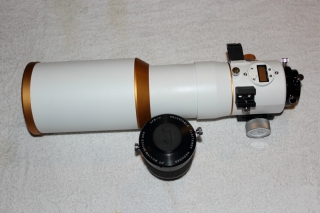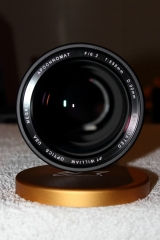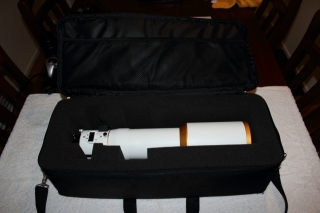Anthony's Astrophotography
Main Scope – Wide Field
The hobby of astrophotography has an infinite number of objects that can be imaged, which is great however these objects vary in proximity to Earth as well as in their size. This means for us folk wanting to image these objects we will need a variety of scopes to image them properly over the life time of our hobby. Don’t be disheartened at the thought of spending your hard earned cash on a scope thinking it will only be good to image a few objects before you have to buy a new one, luckily there are lots of objects in the night sky for each type of scope to keep you busy between purchases. As mentioned every telescope has different characteristics about it that make it ideal for some applications but poor for others. Before I explain this further let me explain the main types of Optical Telescopes:
Optical telescopes can be classified by three primary optical designs (refractor, reflector, or catadioptric), then by sub-designs of these types, or by the task they perform. They all have their different advantages and disadvantages and they are used in different areas of professional and amateur astronomy.
Refracting telescopes (Dioptrics)
A refracting or refractor telescope is a type of optical telescope that uses a lens as its objective to form an image (also referred to a dioptric telescope). Refractors “bend” the light path through the lenses to a focal point and are limited by the quality of the glass and the number of lenses used to focus all wavelengths of light to the same point hence avoiding Chromatic Aberation! What does this mean??? if you can remember back to your school years when you used a prism to refract white light into a rainbow??, the principle is similar here in that Green, Red and Blue wavelengths of light refract at different angles. As such if you are bending the light through a lens you will get some degree of separation from each colours wave lengths or Chromatic Aberations. Refractors are broken into three main classes:
- Non-achromatic (Typically single lens no colour correction)
- Achromatic telescope (Typically two lenses and corrects Blue and Red wavelengths)
- Apochromatic (Typically three of more lenses and corrects for the full visible spectrum of light)
Reflecting telescopes (Catoptrics)
A reflecting telescope as the name suggests is an optical telescope which uses curved mirrors that “reflect” light into a focal point. Although reflecting telescopes produce other types of optical aberrations, it is a design that allows for very large diameter objectives. Reflecting telescopes come in many variations and may employ other optical elements to improve image quality or place the image in a mechanically advantageous position. Since reflecting telescopes use mirrors, the design is sometimes referred to as a “catoptric” telescope, Some common tyoes of Reflectors are:
- Newtonian Telescope (Probably the most common reflector out there)
- Dobsonian Telescope (Are a Newtonian with a Dobsonian Mount)
- Gregorian Telescope
- Cassegrain Telescopes
- Dall–Kirkham telescope
- Nasmyth telescope
- Ritchey–Chrétien telescope
Catadioptric telescopes (Catadioptrics)
A catadioptric optical system is one where refraction and reflection are combined in an optical system, usually via lenses (dioptrics) and curved mirrors (catoptrics). Some examples are:
- Argunov–Cassegrain telescope
- Klevtsov–Cassegrain telescope
- Lurie–Houghton telescope
- Maksutov–Cassegrain telescope
- Maksutov Newtonian telescope
- Modified Dall–Kirkham telescope
- Schmidt–Cassegrain telescope
- ACF Schmidt–Cassegrain telescope (Meade Instruments)
- Schmidt–Newton telescope
If you want more details about the types of scopes out there have a look at Wikipedia Refractors, Reflectors and Catadioptric. I could literally write a book on telescopes to cover all the details about them but just don’t have the space on this page.
Another important factor when choosing a telescope is it’s speed, a telescopes speed is it’s F Ratio and the F Ratio is calculated by dividing the focal length by the diameter of the primary objective, (see here for a much better explanation http://en.wikipedia.org/wiki/F-number). But simply put the lower the F number the wider the field of view and the faster the telescope will gather light to the focal point.
I have started my astrophotography journey with a Refractor type telescope (William Optics Megrez 90 mm doublet apochromatic refractor to be precise) and this telescope has a short focal length of F6.2 and is a relatively fast scope. Specifics about this scope I like are:
- It is very well made
- Is light in weight
- Is very forgiving of any errors in guiding/the mount
- Is an Apochromatic telescope so all the colours merge to a single focal point nicely
- Has a 10:1 Focuser
- Can Carry over 2KG of weight on the focuser tube
- Has a Digital Dial Guage for acurate focusing
- Has a dedicated Field Flattener that give a nice flat image
- Retractable Dew Sheild
- Custom Carry Bag fo rthe scope to fit in
Here are some pictures of the scope:


